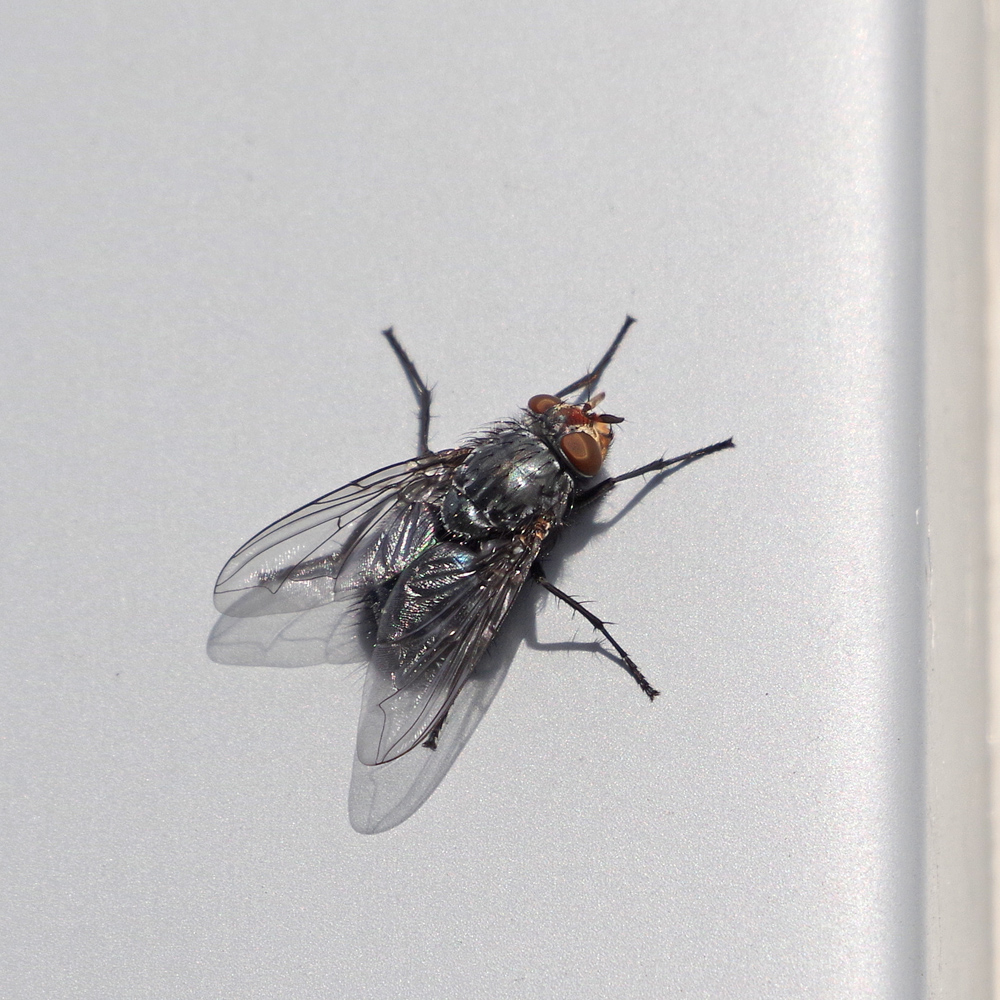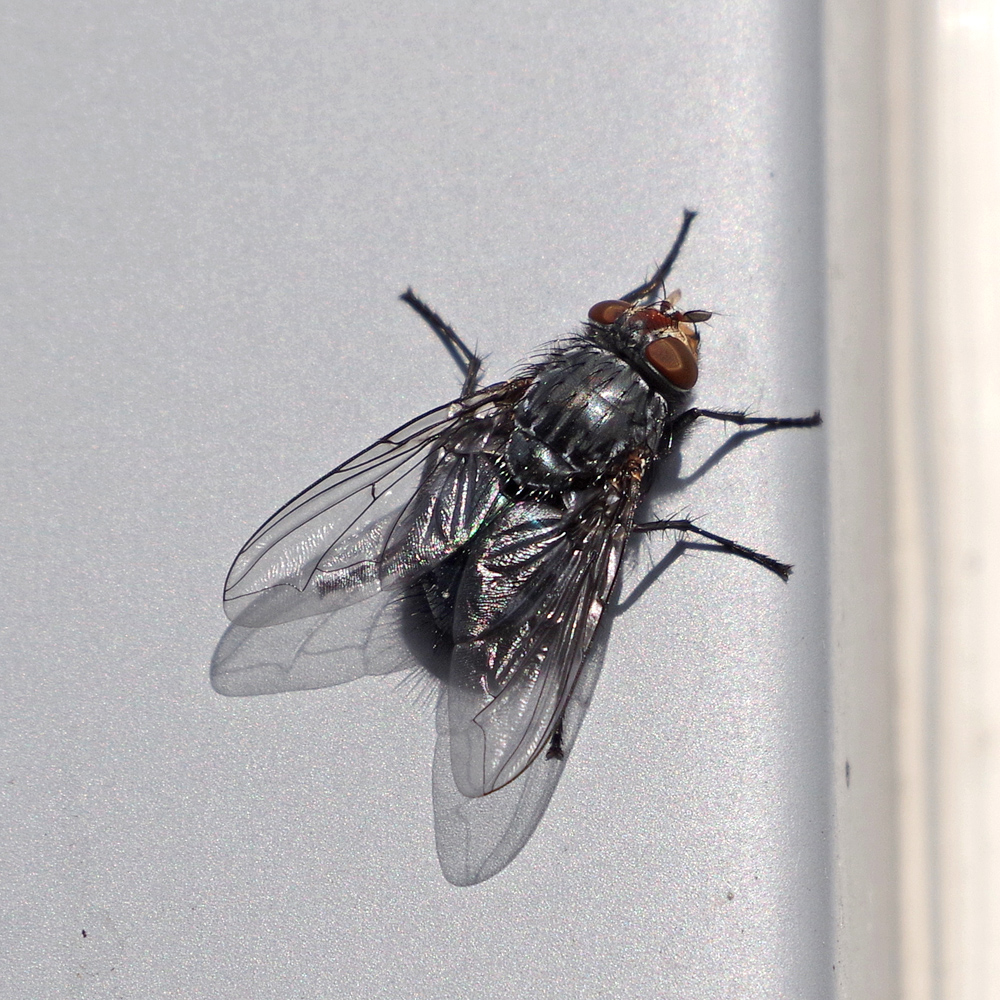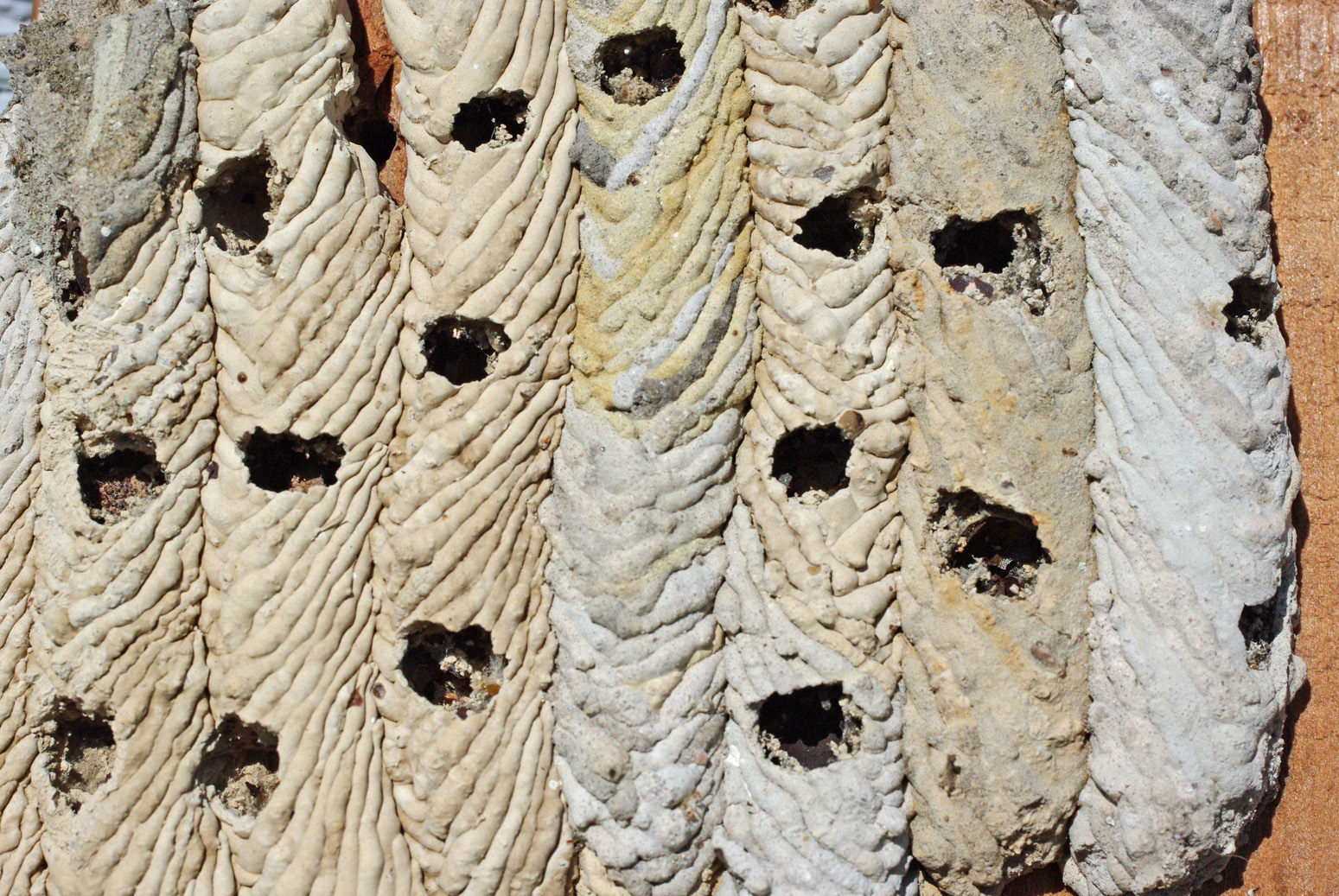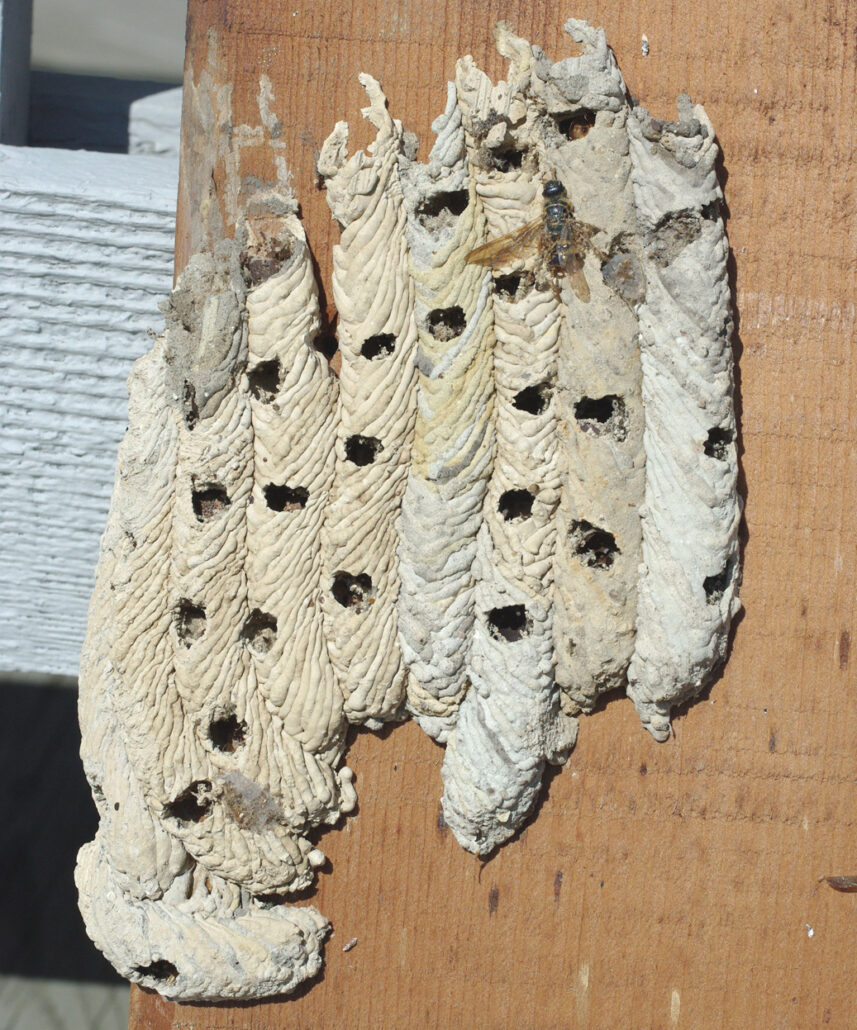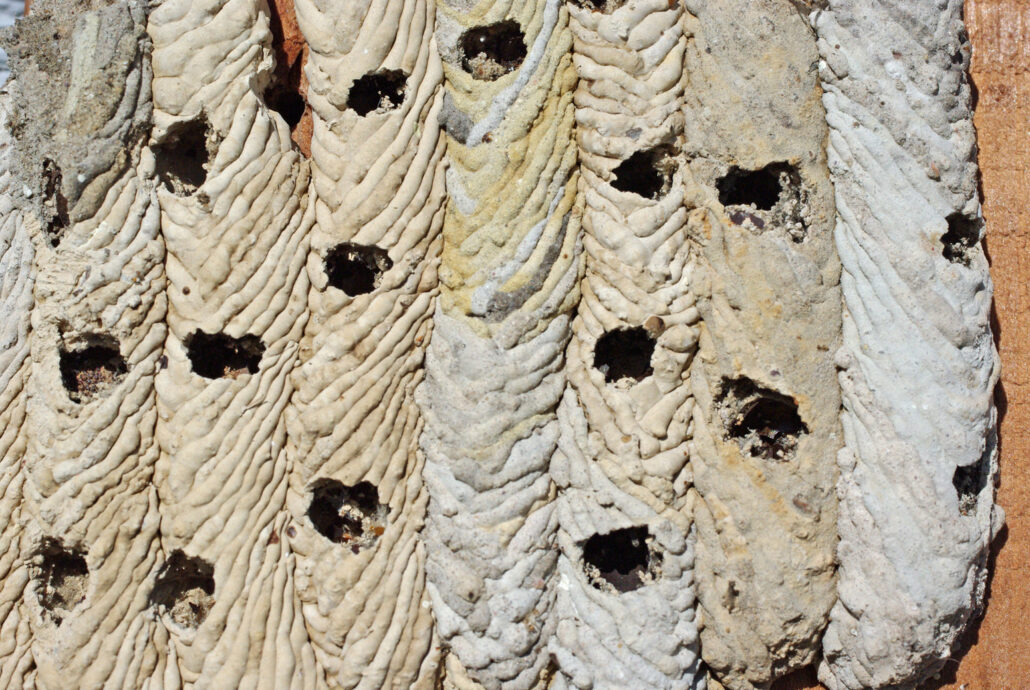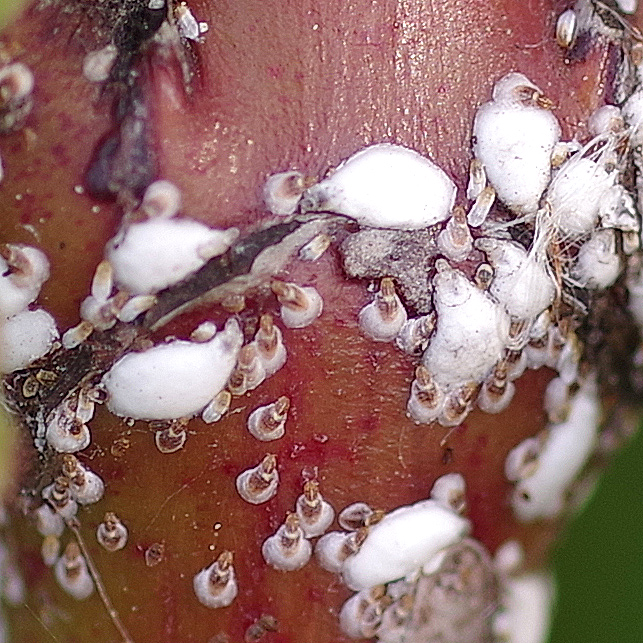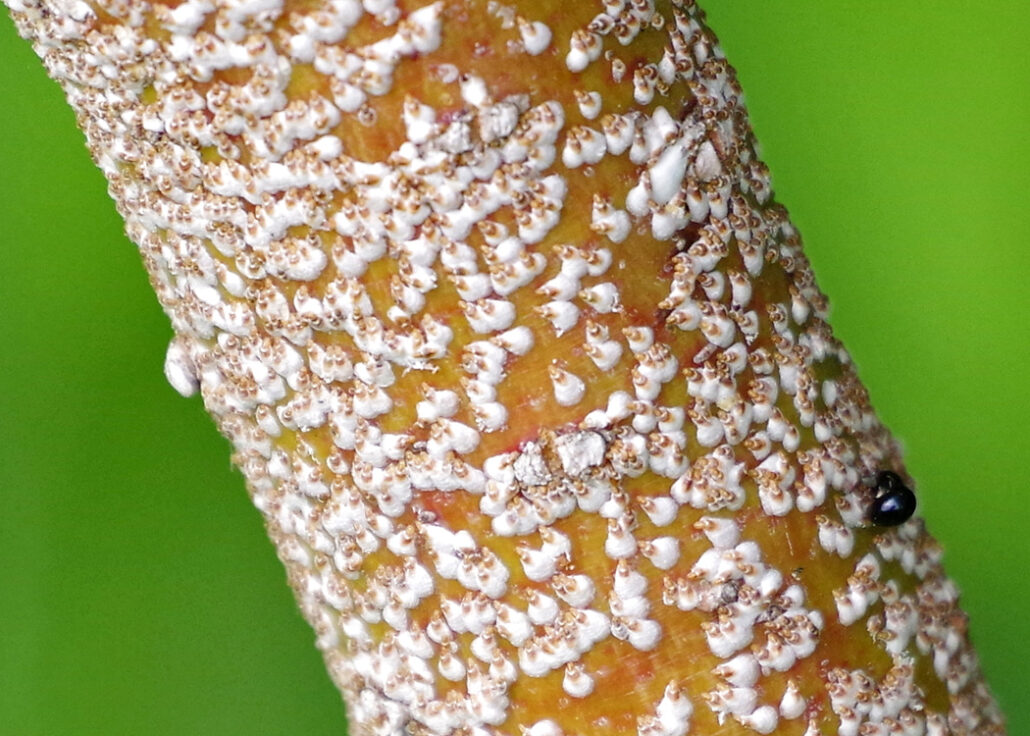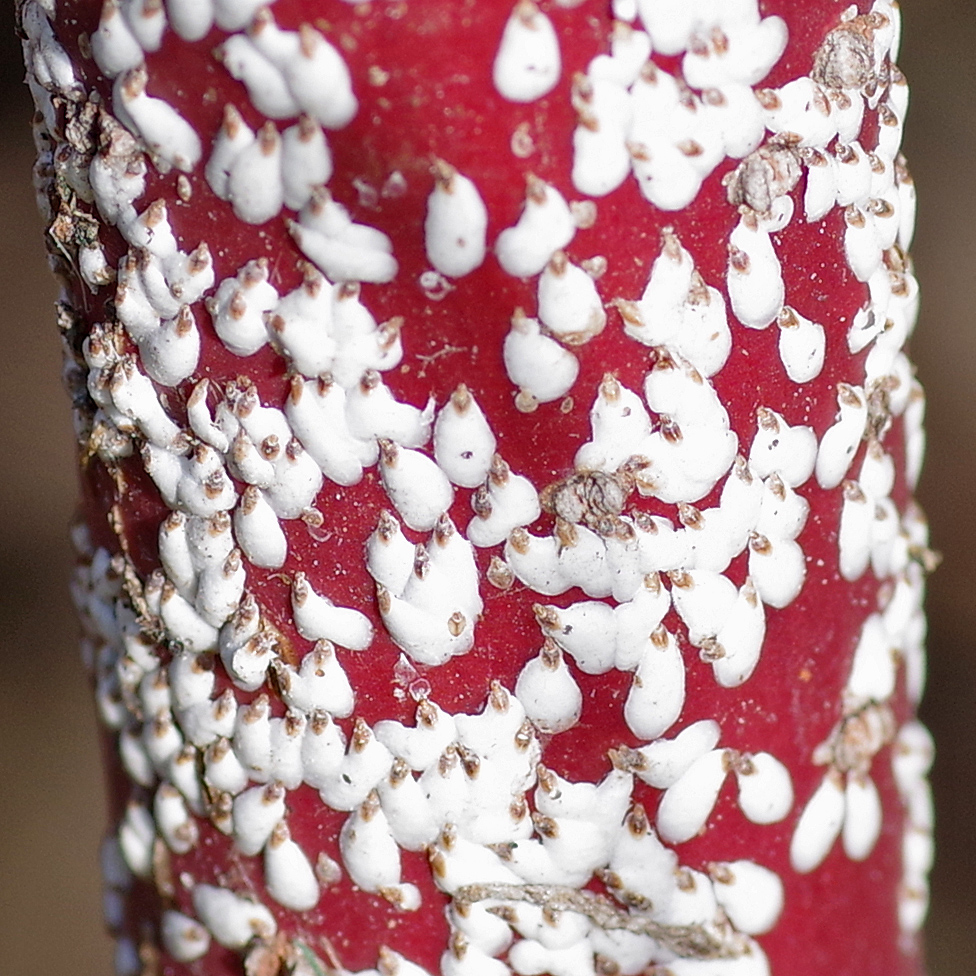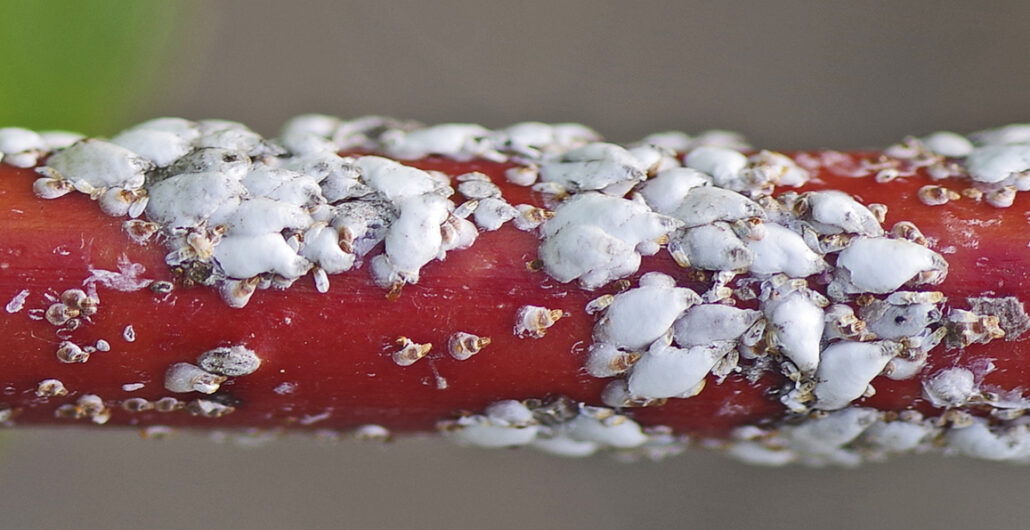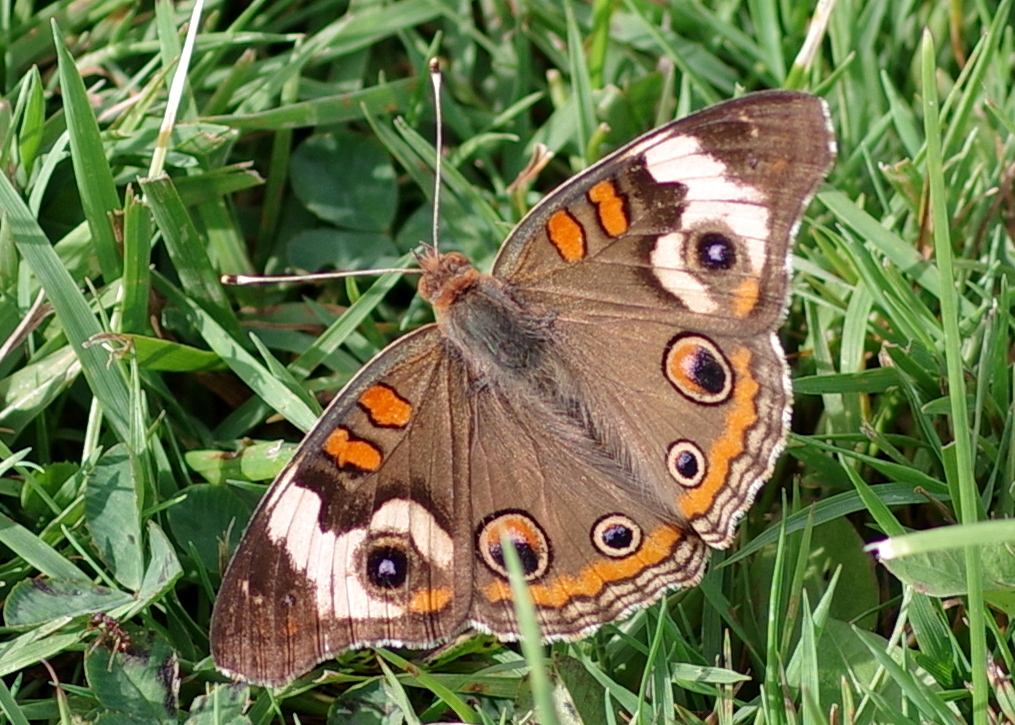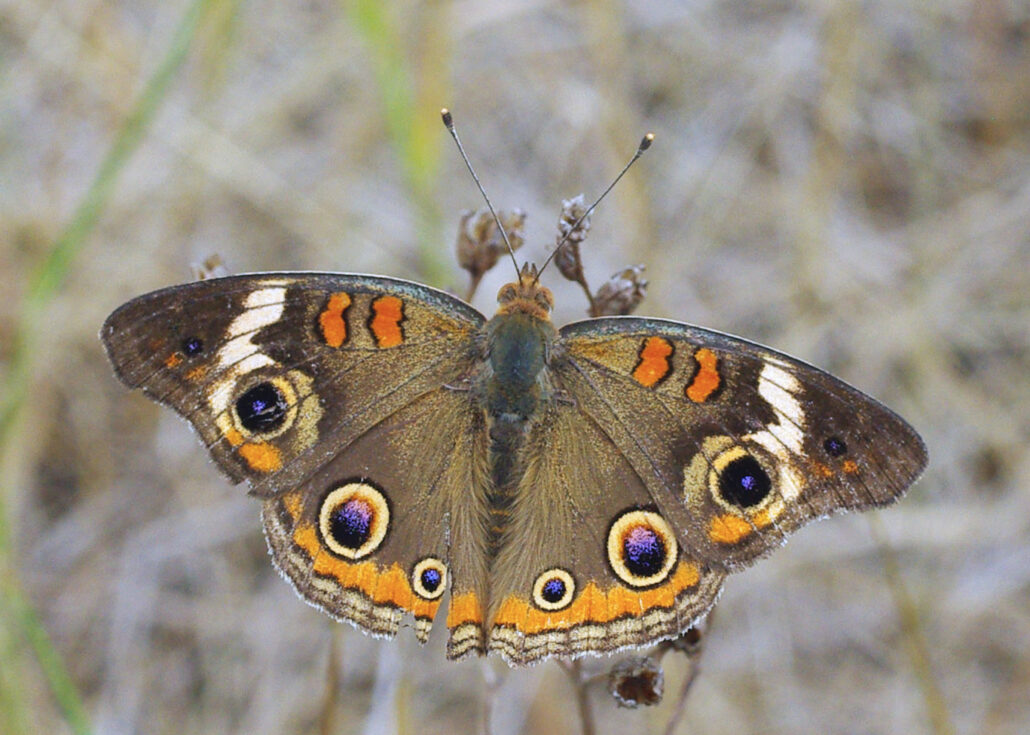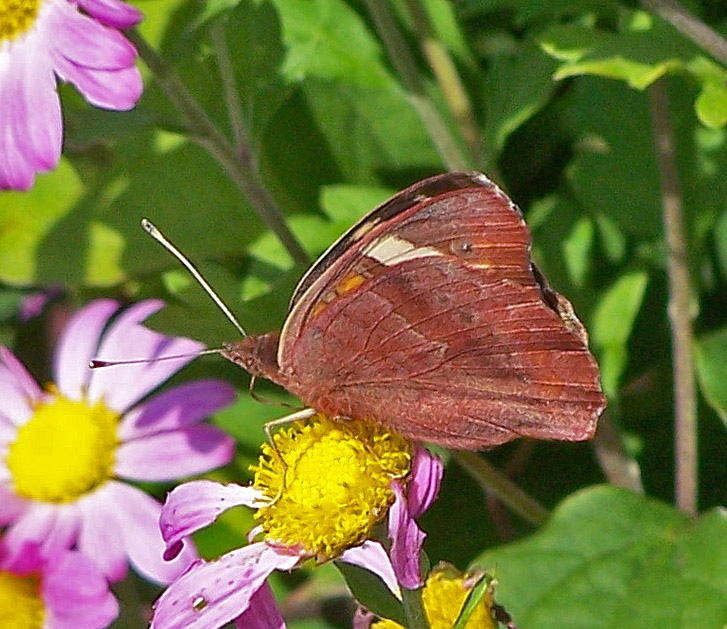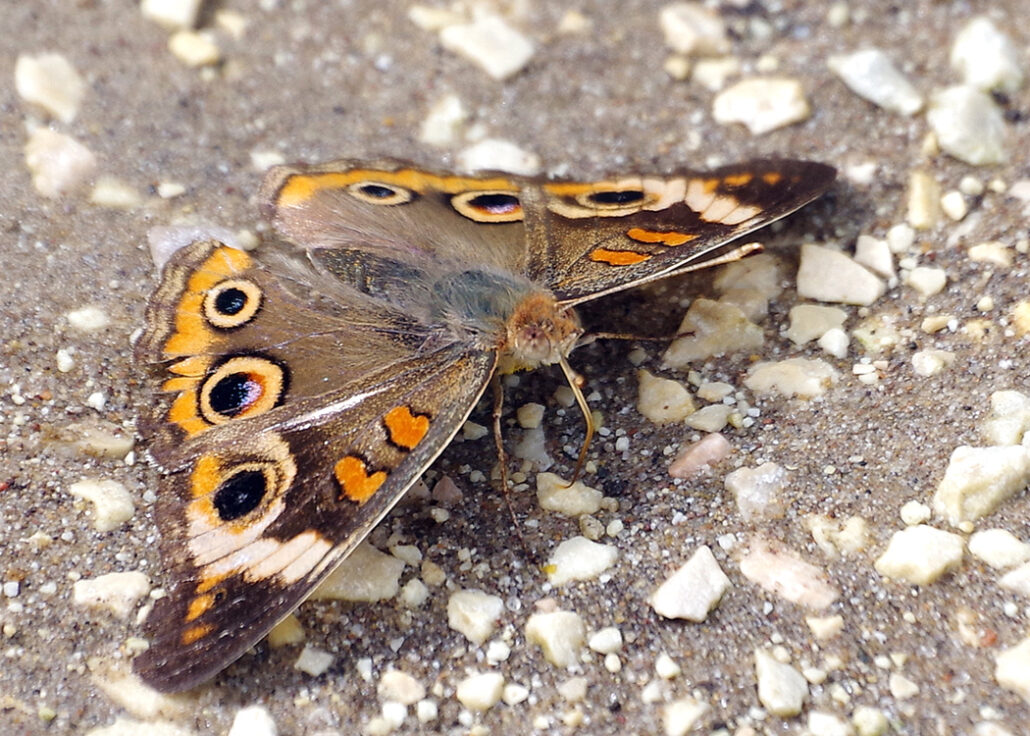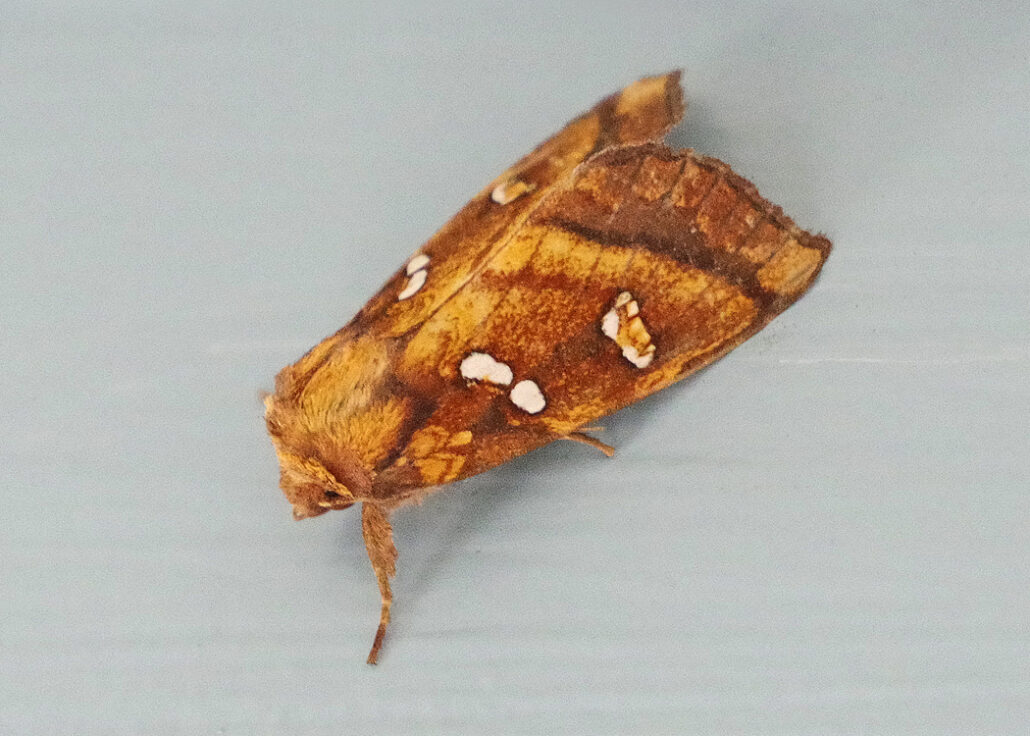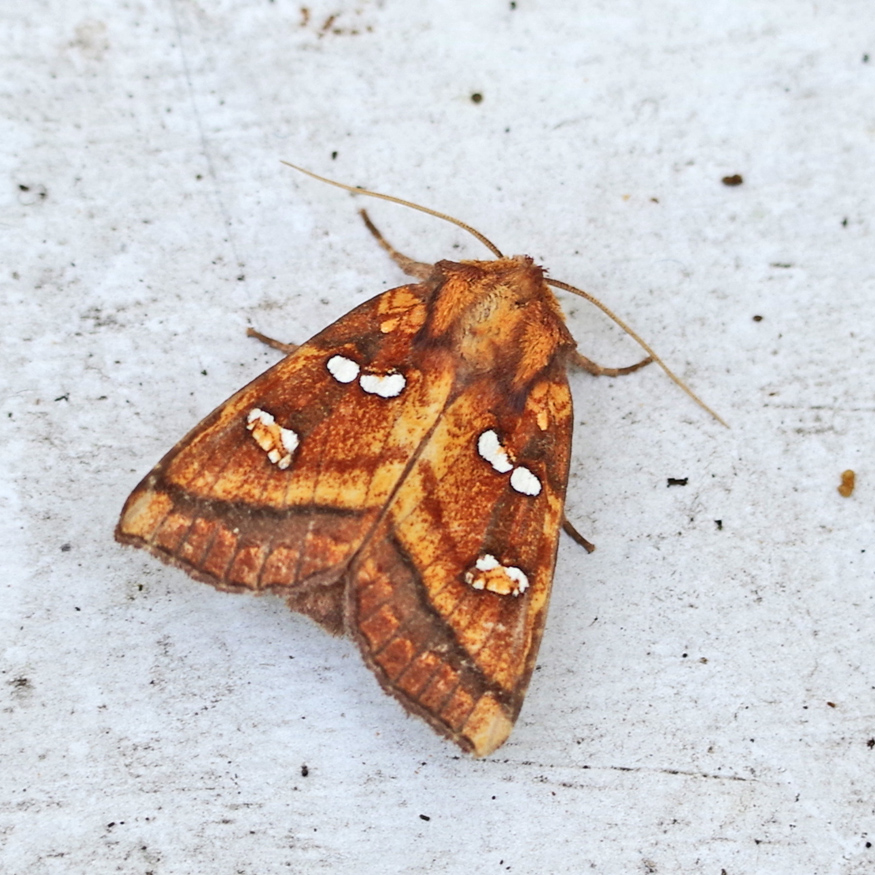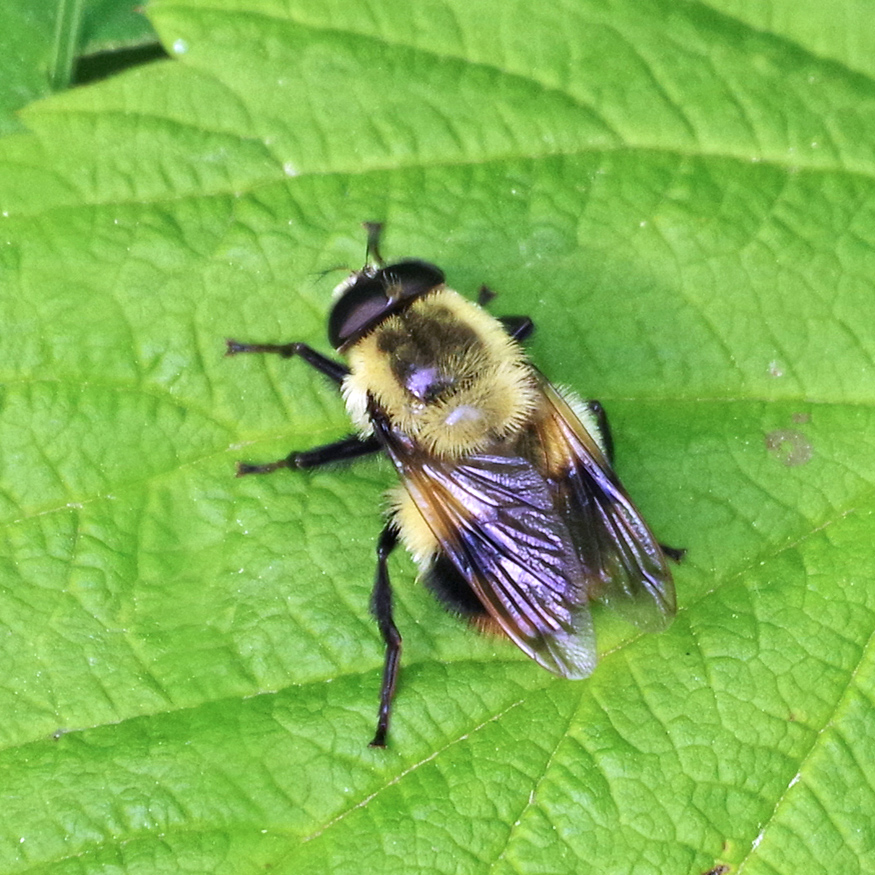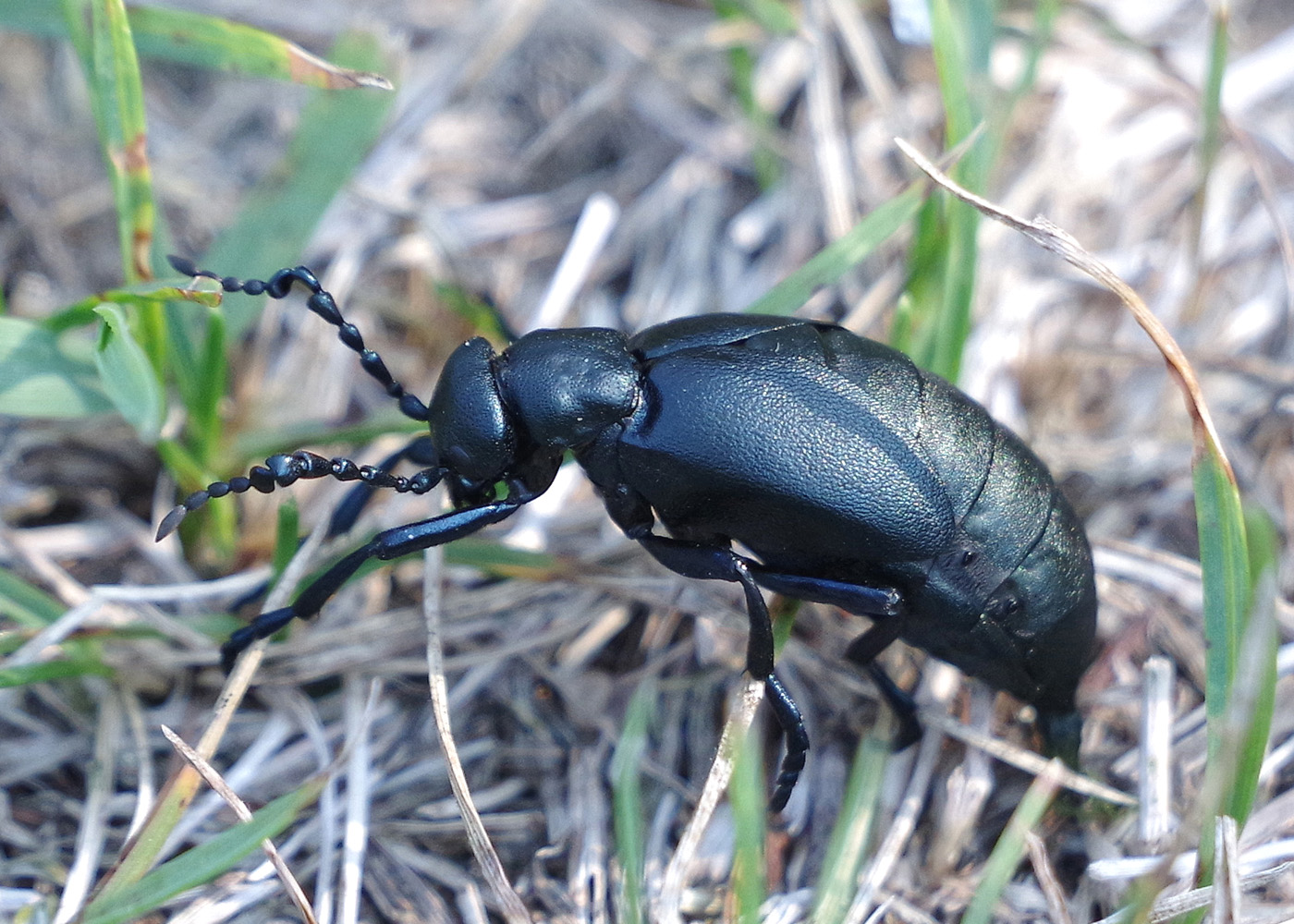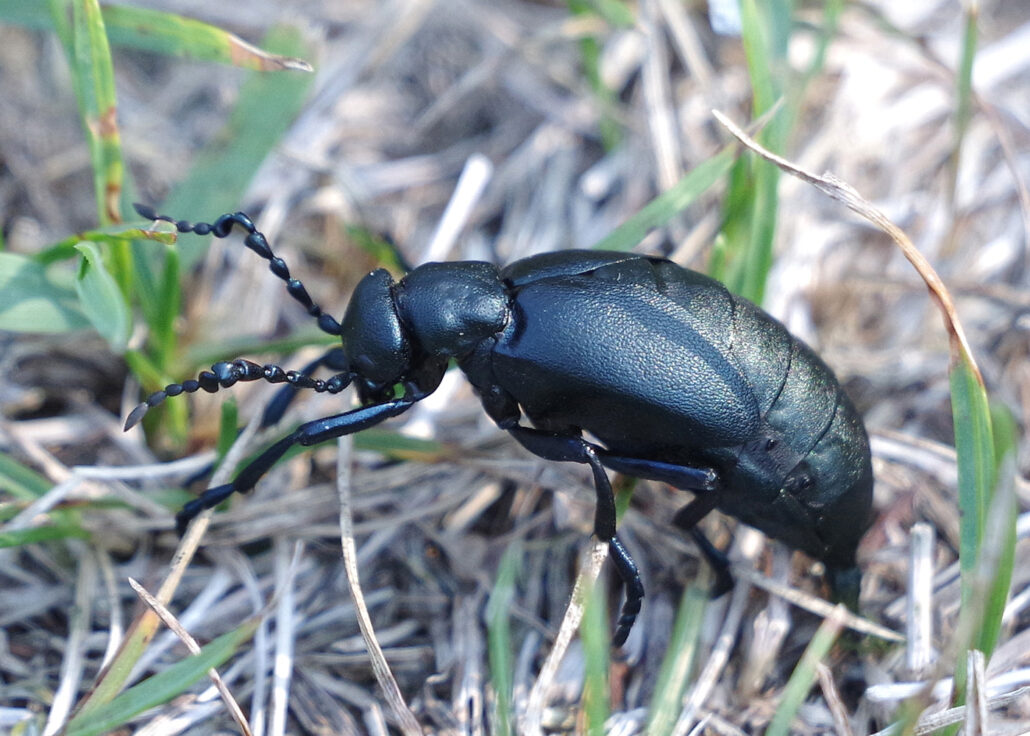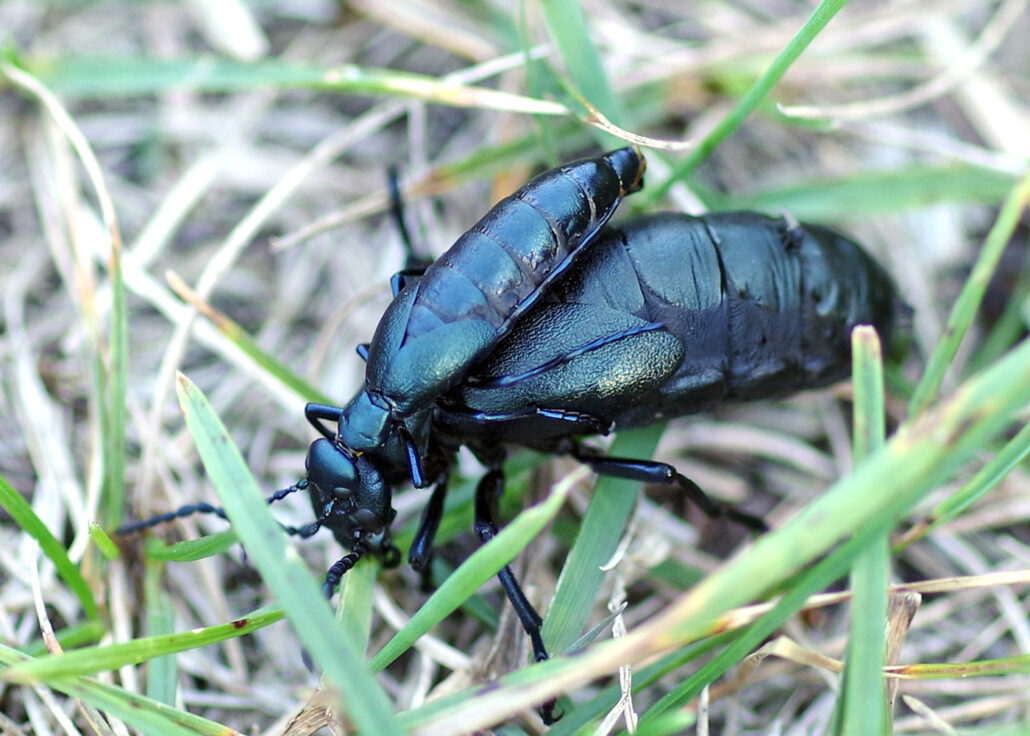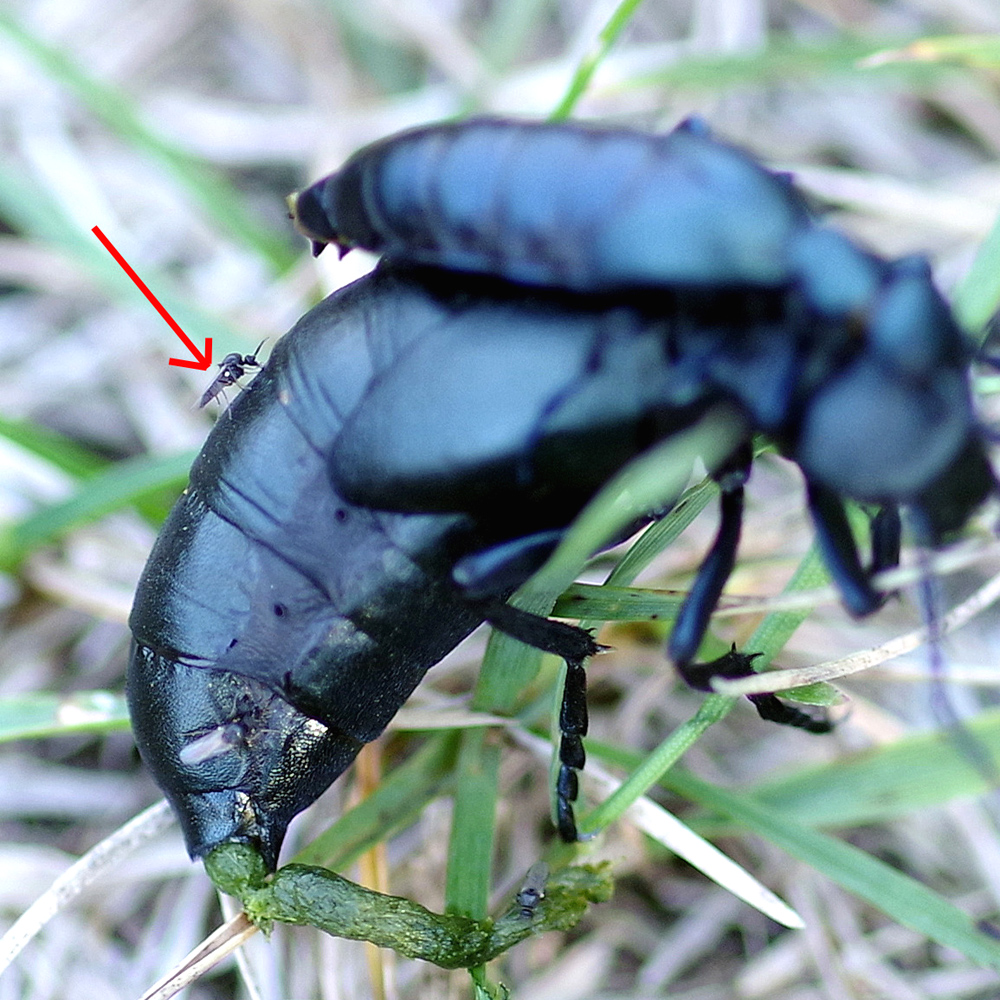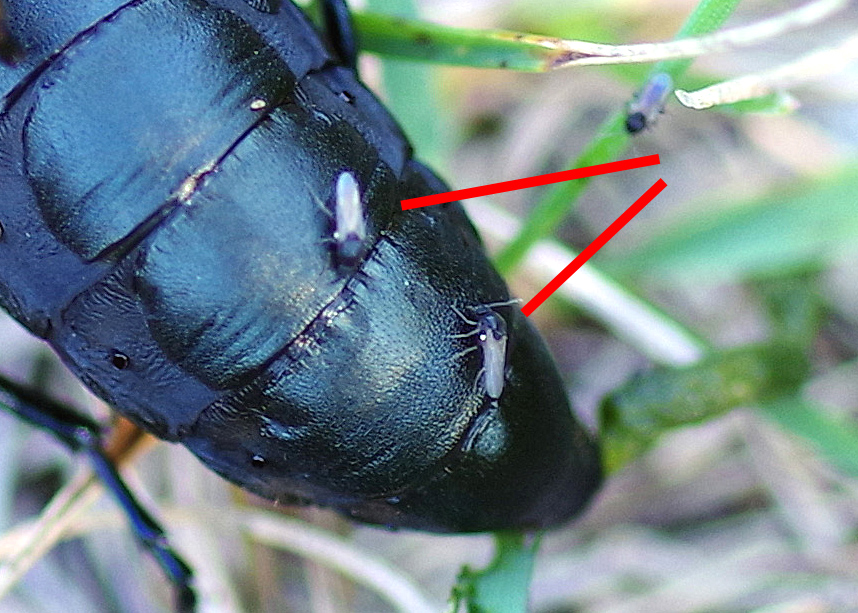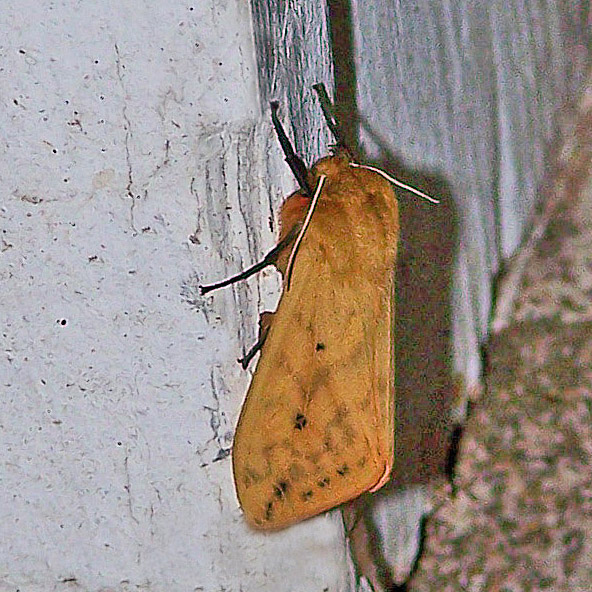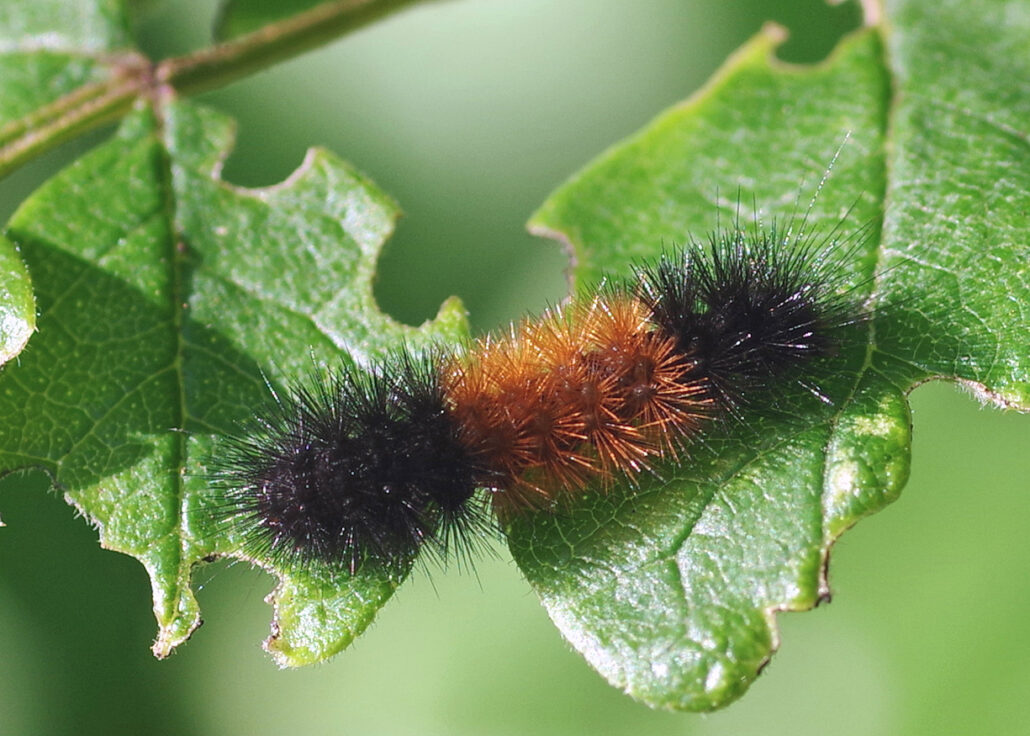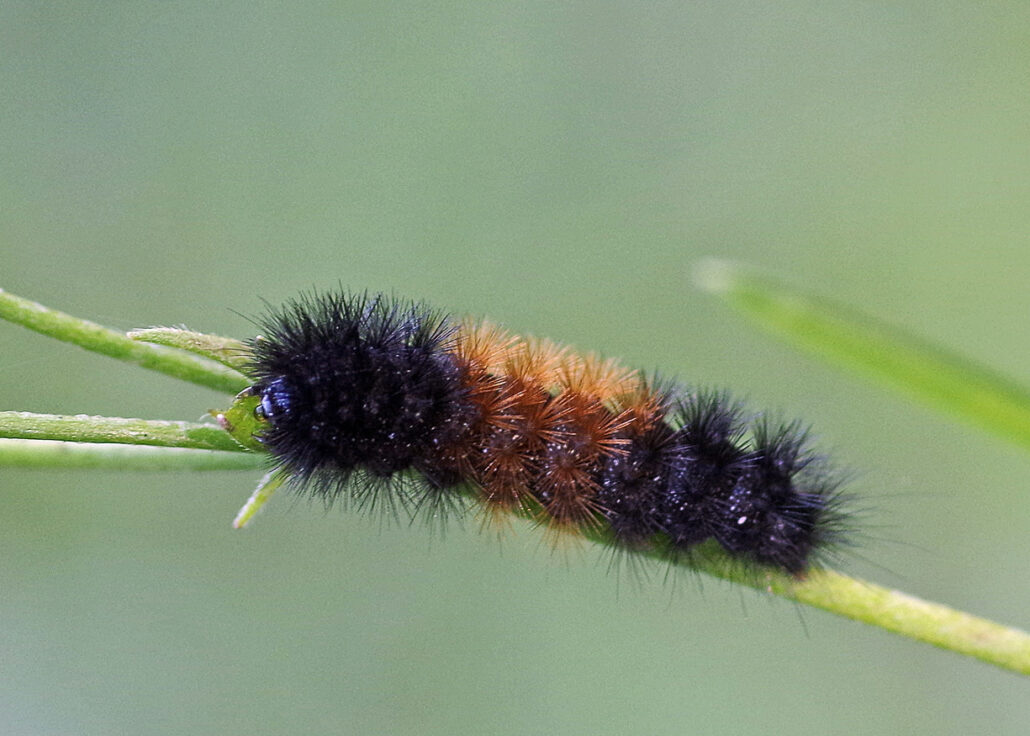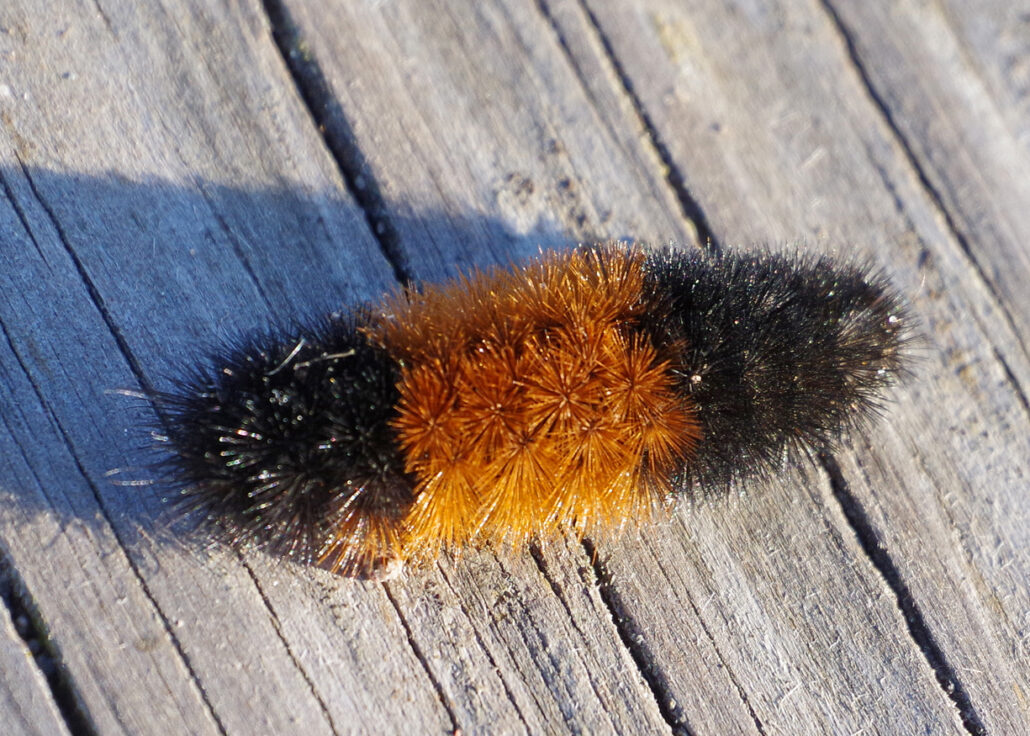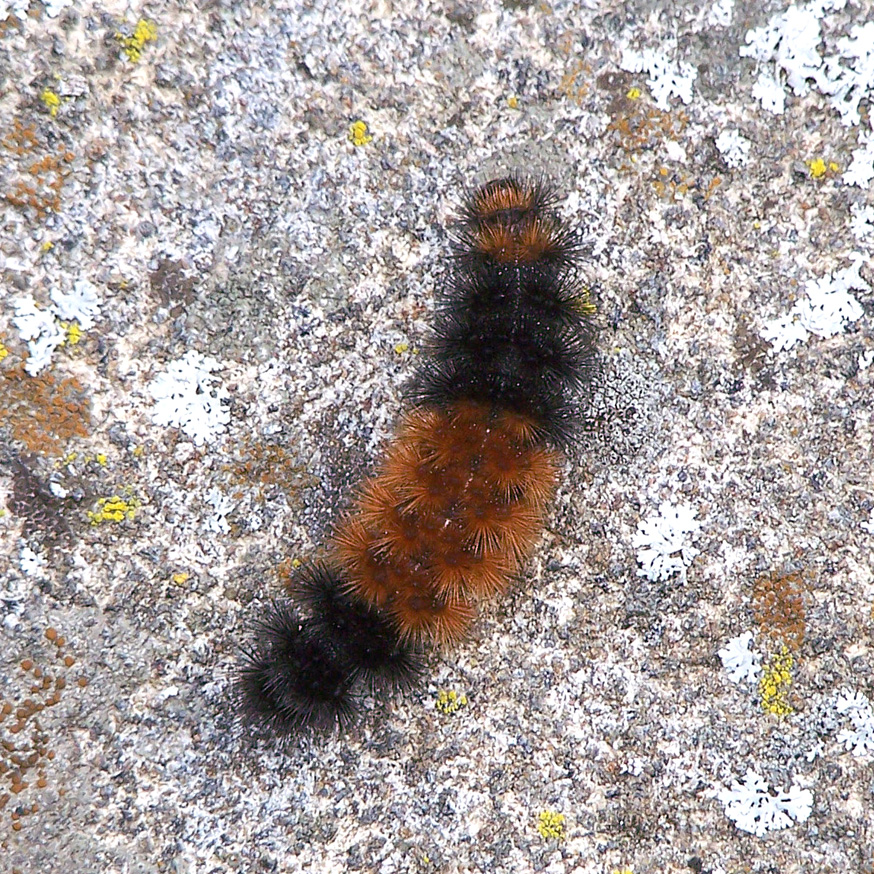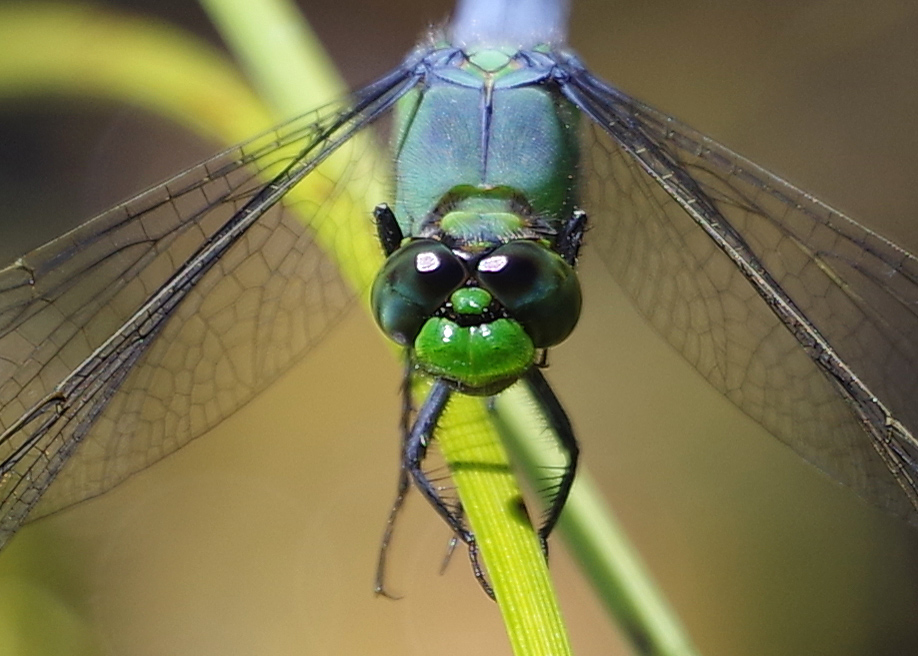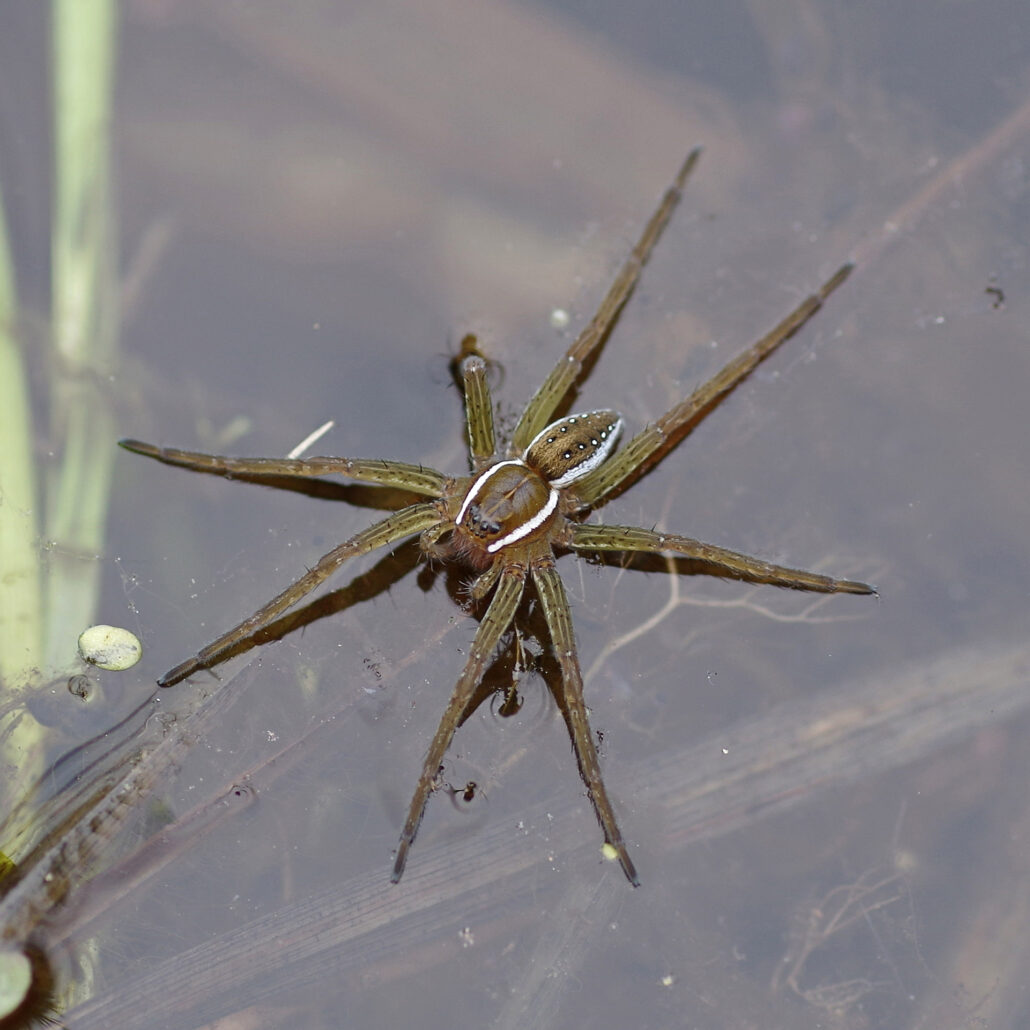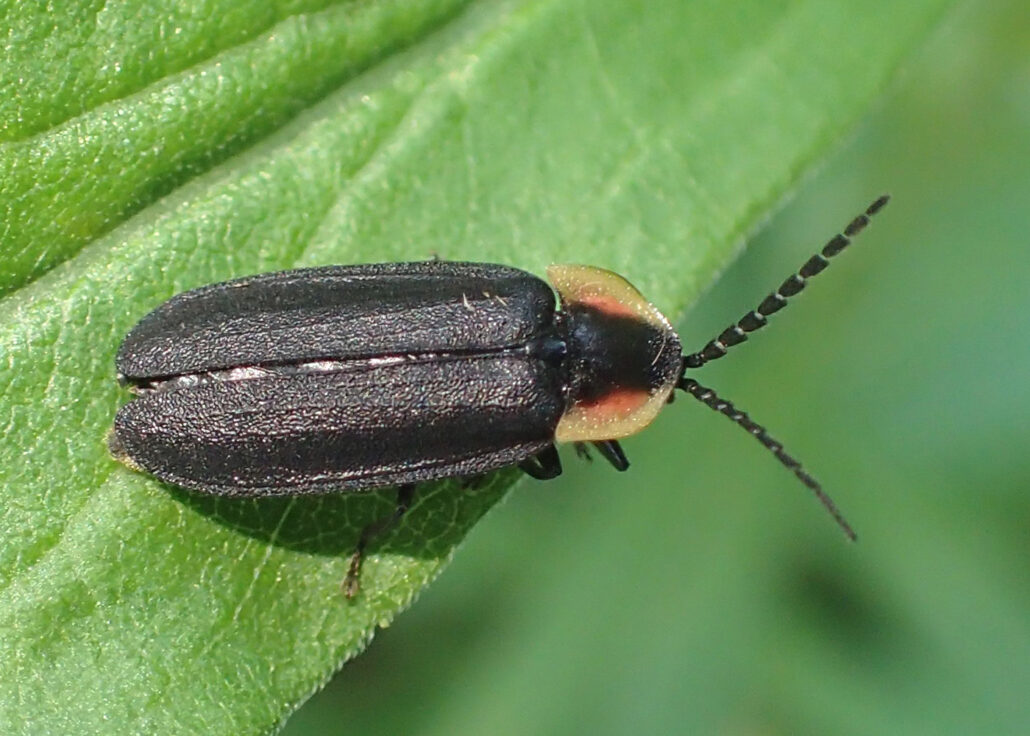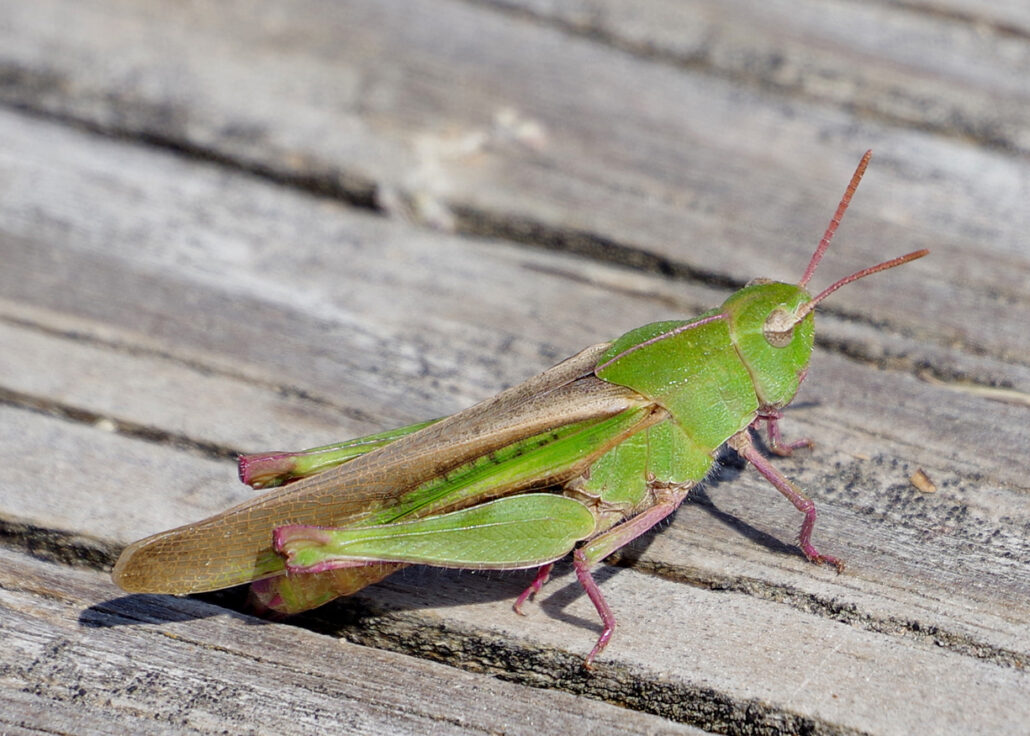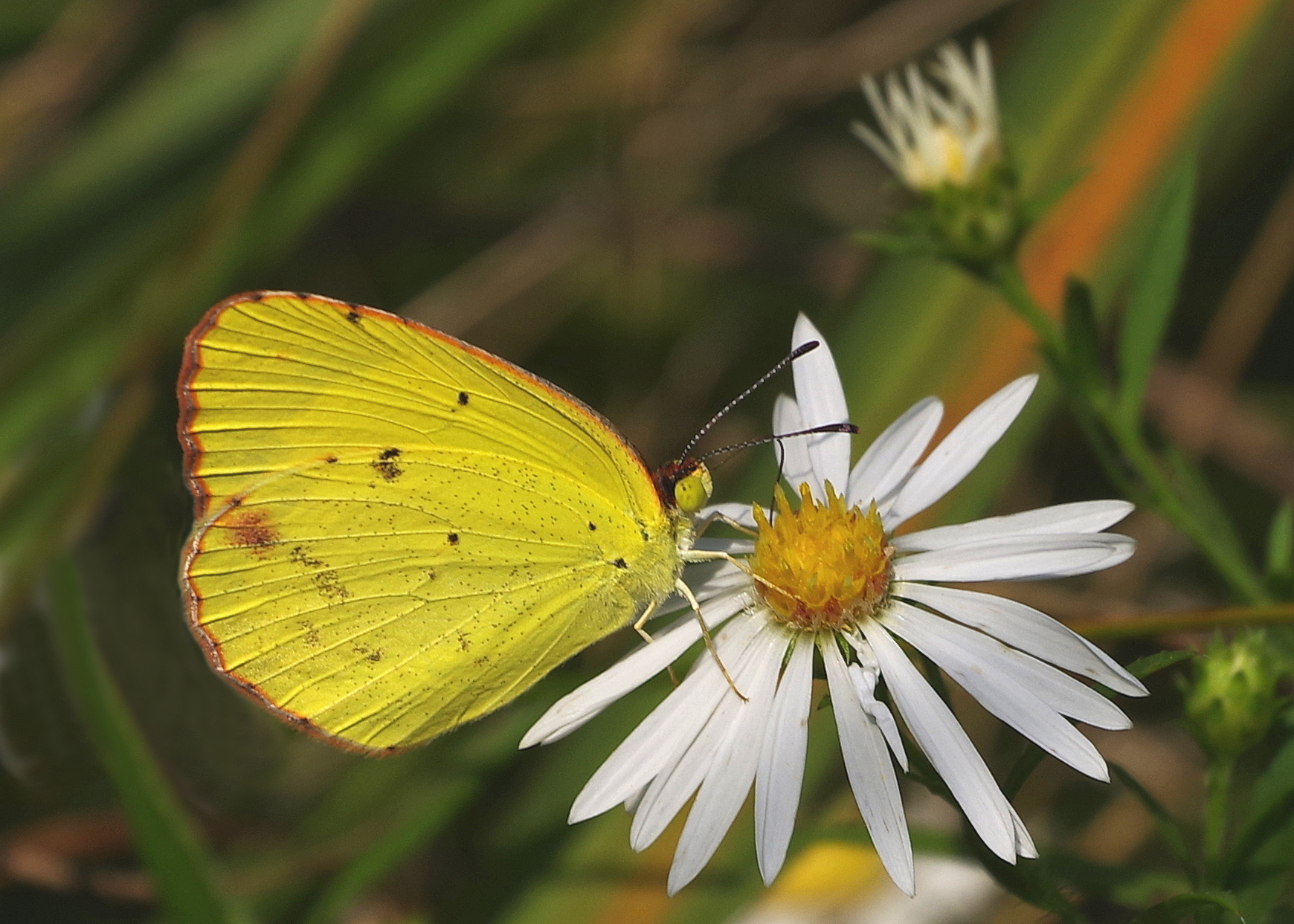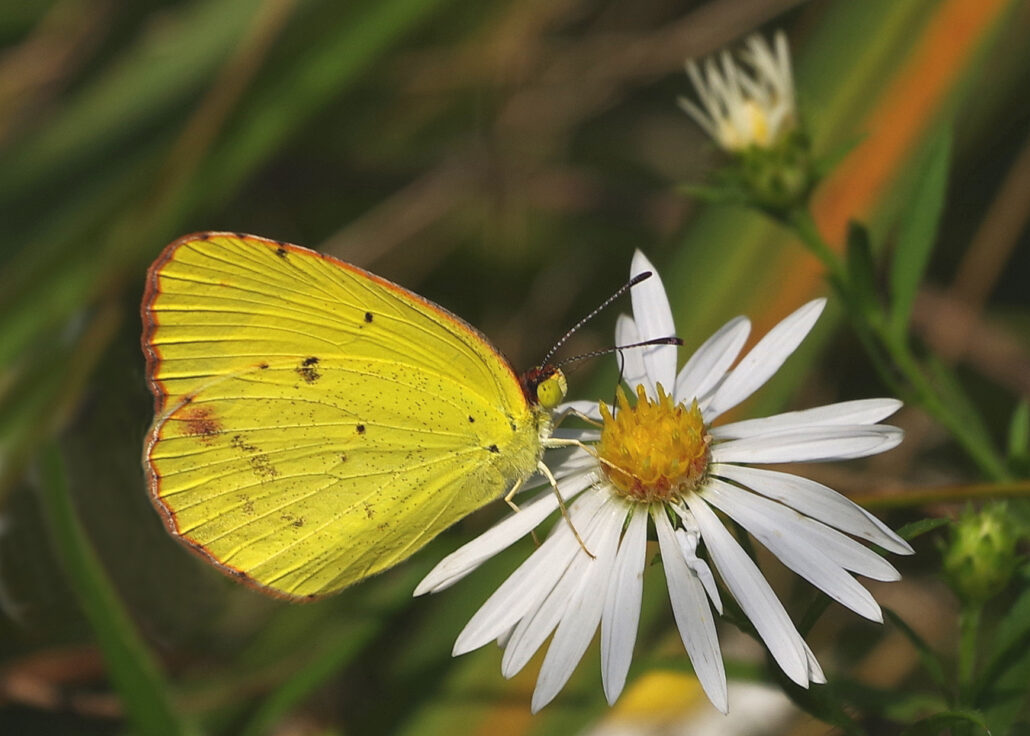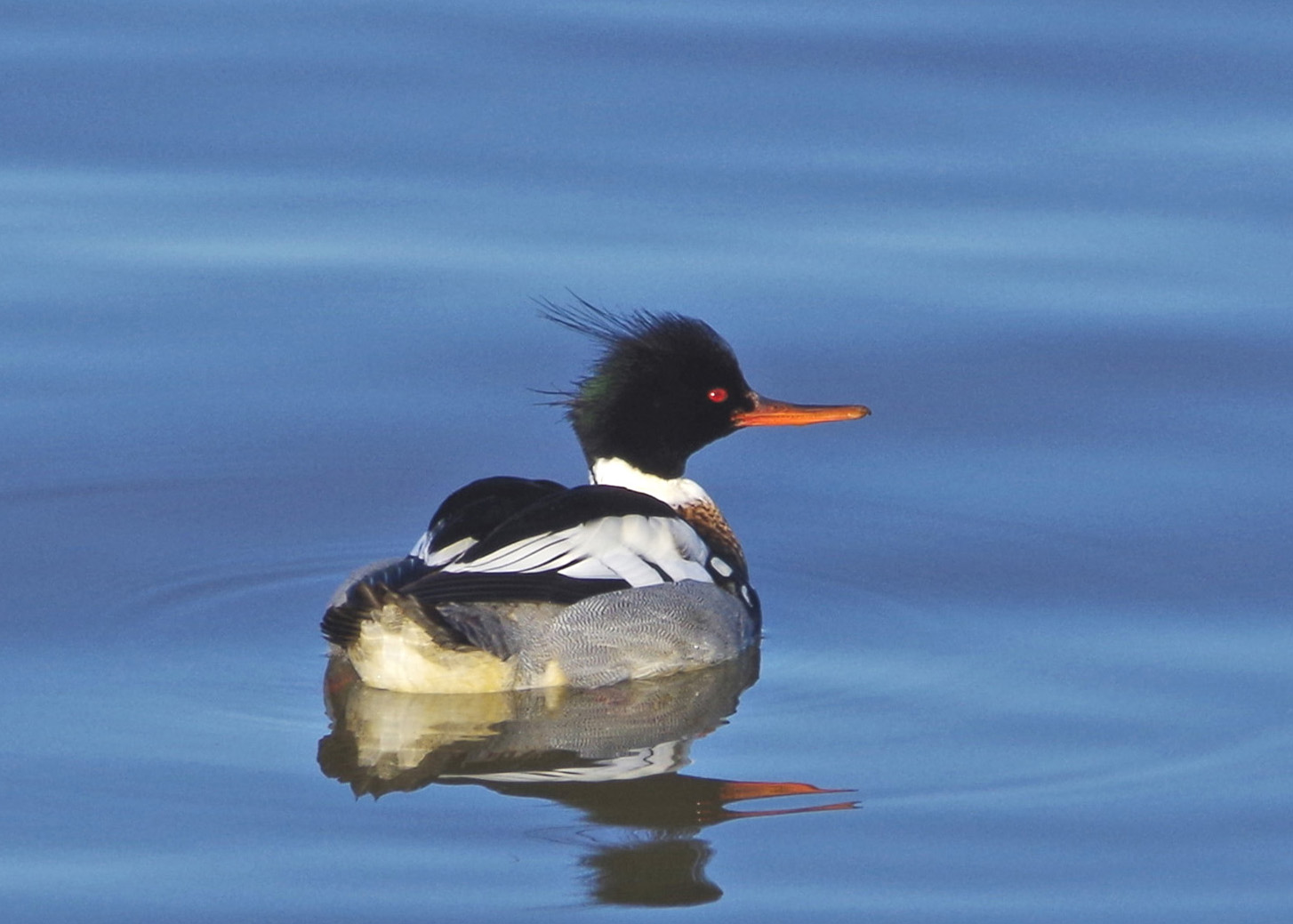
by Kate Redmond
And Now for Something a Little Different XVIII Red-breasted Mergansers
Howdy BugFans,
Perched, as she is, on the rim of the Lake Michigan, the BugLady has a front row seat for the activities of the Lake and its residents (and, of course, she’s photographing the heck out of it – rainbows, sunrises, sunsets, storms, ships, and this fall, even waterspouts!). The Lake changes daily – hourly – in minutes. In fall, and then again in late winter, flash mobs of mergansers and gulls erupt and then disappear, following schools of small fish. It’s hard to tell whether the mergansers locate the fish first and the gulls notice, or vice-versa. Once, the BugLady watched as two Bald Eagles flew out to investigate the scrum.
This year, toward the end of November, she watched a raft of mergansers more than 100 yards long (she couldn’t photograph the whole line) – many thousands of ducks, plus gulls, diving for fish.
So – what are Red-breasted Mergansers?
Winter brings Red-breasted Mergansers to Lake Michigan, flying low in long strings, far offshore. Mergansers, along with about a dozen other species, belong to a group of ducks called the Sea, Marine, or Diving ducks (as opposed to the Puddle or Dabbling ducks like Mallards and Teal). Sea ducks are mostly northern species that are adapted to survive offshore in winter, and many dive deep for their food.
Drinking salt water (or consuming it with their prey) is as bad for sea ducks and other oceanic species (petrels, shearwaters, etc.) as it is for us, but they have a salt gland located above each eye that acts like a mini-kidney, filtering salt from the water and releasing concentrated salt water through the nares (nostrils) https://travisaudubon.org/murmurations/salt-glands-in-seabirds.
Red-breasted Mergansers (Mergus serrator) are one of three species of mergansers in North America; the others are the Hooded Merganser and the Common Merganser, known in Europe as the Goosander. Of our three mergansers, the Red-breasted Merganser is found more often in salt water, and it breeds farther north and winters farther south than the other two. Red-breasted Mergansers are sometimes called “sawbills” (“serrator” comes from a Latin word meaning “sawlike”) because of the serrations on their bill that help them grip fish.
They are native to northern Eurasia as well as North America; here, they breed on both the Atlantic and Pacific Coasts, and across Canada and the northern tier of the US. They winter in the Great Lakes and along both coasts south to Mexico.
Like loons and the other Sea ducks, their legs are located near the rear of their body –- great for propelling them under water, but not so great for walking. Unlike Puddle ducks, which can leap into the air from the water, Sea ducks must run along its surface, flapping, in order to take off.

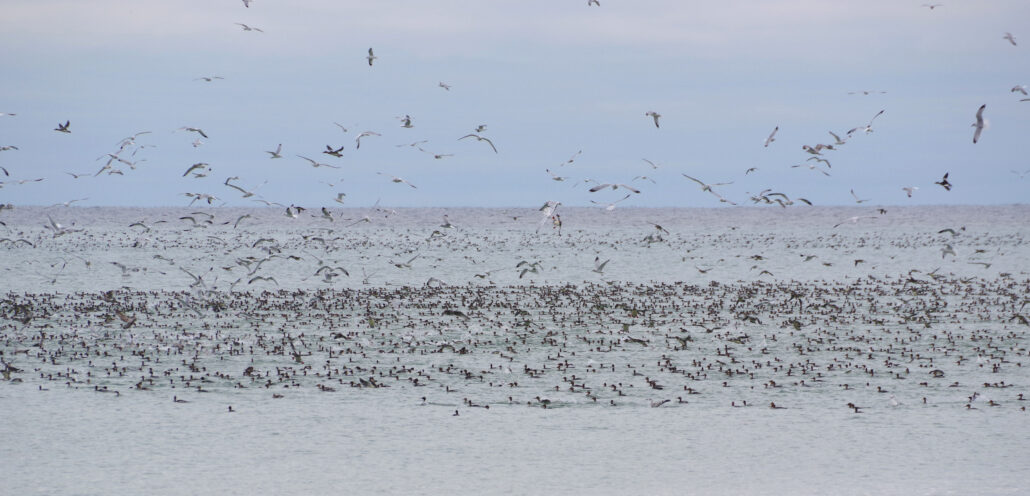


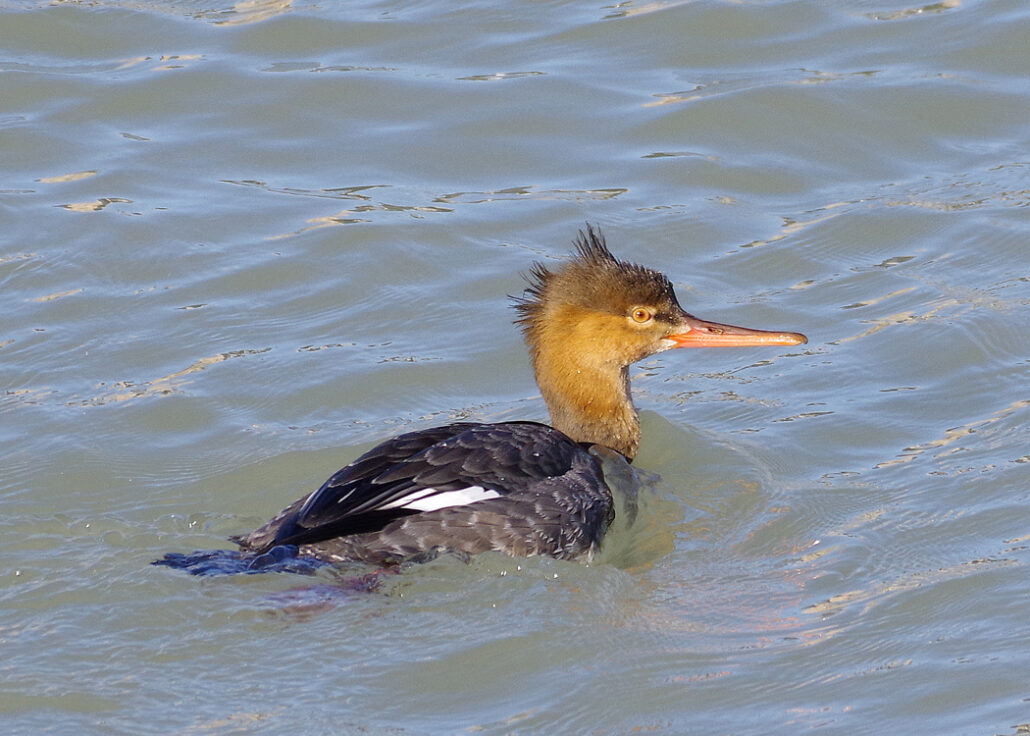
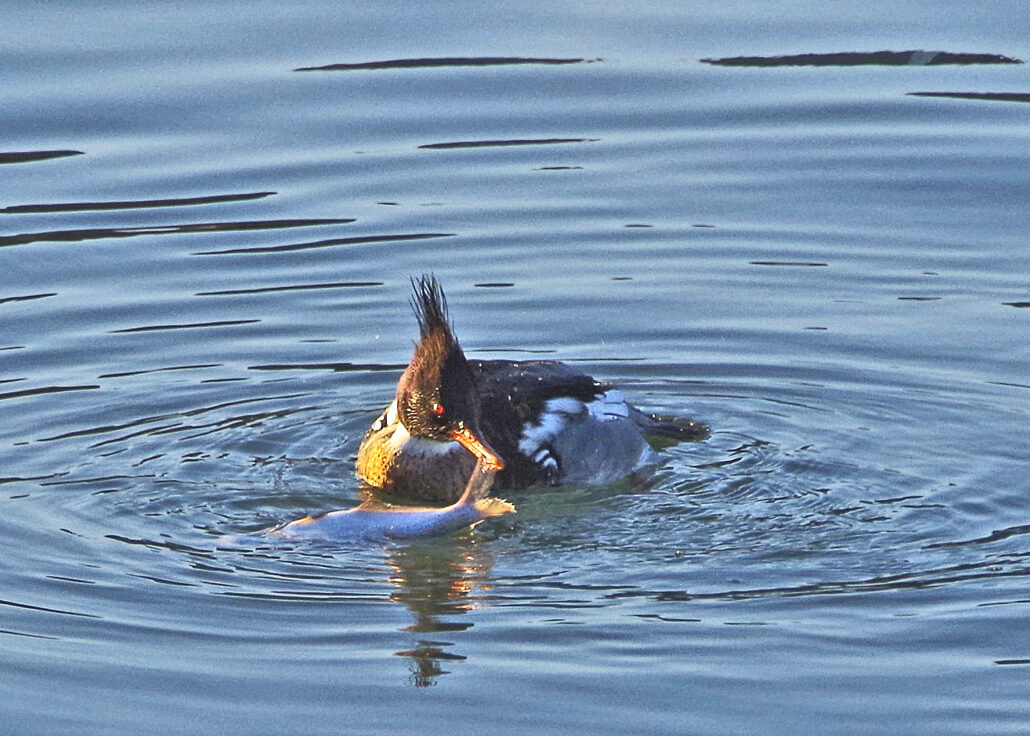

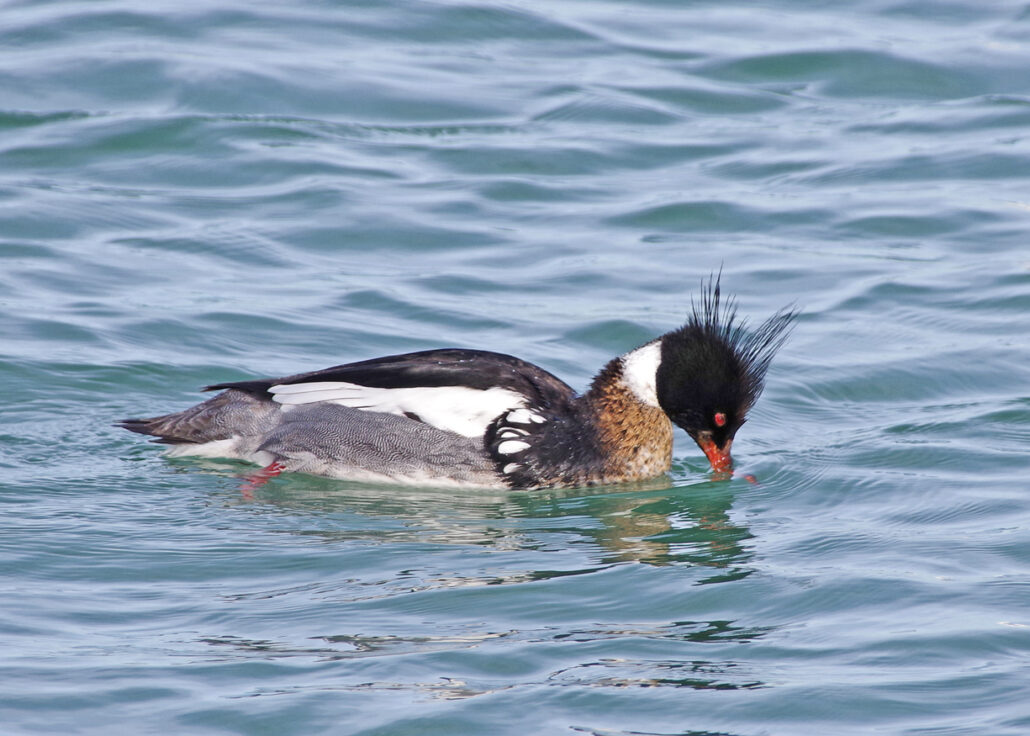
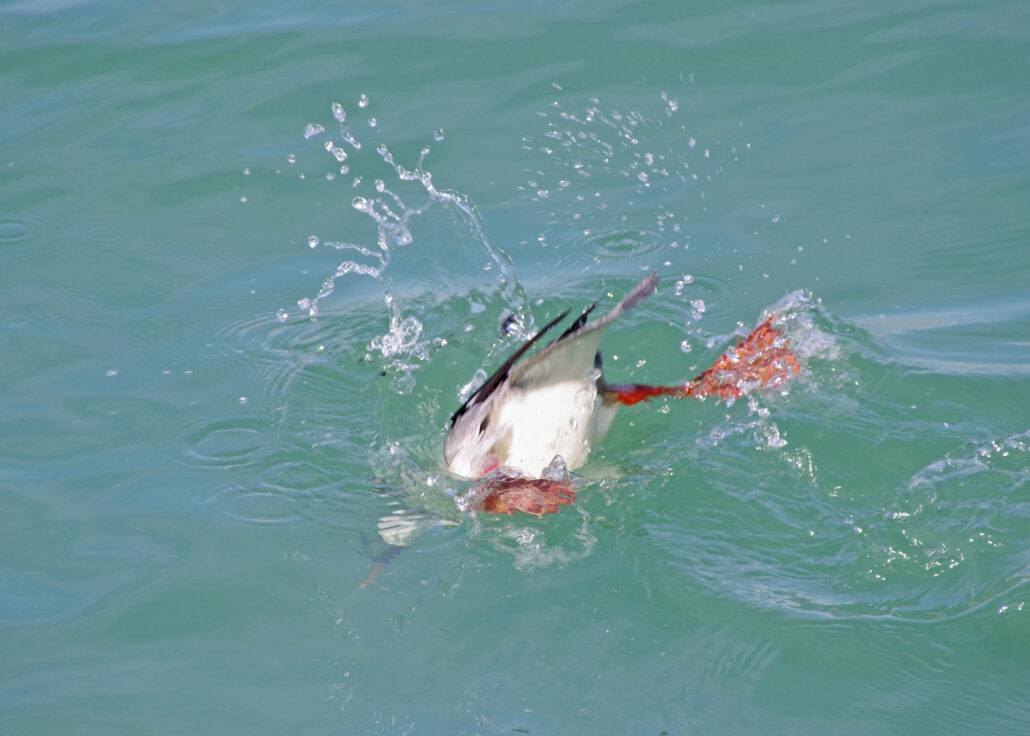
Red-breasted Mergansers spend about half of their waking hours looking for food. They primarily eat small fish, but their menu may also include fish eggs, crabs, aquatic insects, and tadpoles, and because they like small salmon, some have been known to “adopt” fish hatcheries. They hunt by swimming along with their faces just below the water’s surface, like a snorkeler, and by diving (they can stay underwater for about 45 seconds), and sometimes a group of mergansers will cooperate to herd a school of minnows. They typically forage in relatively shallow areas, but they’re equally at home in deep water.
Male Red-breasted Mergansers court by dips, head shakes, and curtsies, vocalizing with a soft “yeow-yeow” sound (here are some merganser vocalizations – https://www.allaboutbirds.org/guide/Red-breasted_Merganser/sounds). Females nest beside fresh or salt water, often close to the area they were hatched in, and because they are a social, non-territorial species, they are comfortable nesting near gulls or other ducks. In June, females lay their eggs in a shallow depression lined with grass and feathers, but males don’t stick around to help with the incubation. Females lead the ducklings to water within a day of hatching, and they are on their own just a few weeks later. They can fly when they’re about two months old.
The clutch size is five to 24 eggs, but other females may contribute their eggs (conspecific brood parasitism), and nests with fifty or more eggs have been found. Mergansers that nest near other mergansers may combine their broods after hatching –- the mass of ducklings is called a “crèche” or “nursery” –- and females take shifts supervising them.
Cold weather kills about half of each year’s crop of ducklings, and predators of eggs and ducklings — ravens, gulls, jaegers, and mink — kill another quarter, but if a duckling survives to adulthood, it’s liable to live for another five or six years. Adults are eaten by foxes, Great-horned and Snowy Owls.
Like other Sea ducks, they are fast flyers; one Red-breasted Merganser was clocked at 100 mph (by the plane that was chasing it).
They are hunted by duck hunters in many areas, but because of their diet, they don’t taste very good (“inedible,” say some bloggers). Most recipes for Red-breasted Mergansers involve removing as much of the fishy-tasting fat as possible, marinating what’s left, and then cooking it at for a long time with lots of herbs.
As long as there’s not too much boat activity, the Port Washington Harbor and adjacent Coal Dock Park can be great places to watch Red-breasted Mergansers and other waterfowl in winter, along with several species of gulls.
The BugLady originally wrote this article for the newsletter of the Lake Michigan Bird Observatory. in her storage unit, and she found an earwig on her sink, but she’s pretty sure that it, like the tree frog that was in the shower, came in when she brought the geraniums inside for the winter).
Kate Redmond, The BugLady
Bug of the Week archives:
http://uwm.edu/field-station/category/bug-of-the-week/

